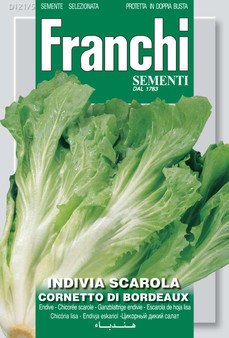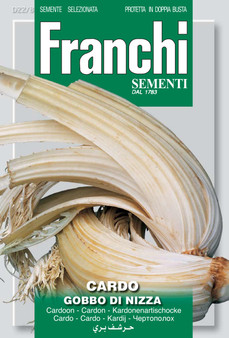Product Description
Gigante di Bergamo: A regional variety from Franchi's home city, with a very large splaying head - good volume. Tender leaves with crunchy ribs. Very good resistance to low temperatures. Dont be tempted to sow them in the spring along with your other lettuces, you wont get very good results. Its an endive, not a lettuce, even if it looks more like a lettuce. They need heat initially to germinate and start their journey, and then cold to develop. Most varieties are very hardy and will tolerate sub-zero. There are several varieties of escarole and endive; the open-headed ones should be tied up about seven to ten days before harvest to blanch the heart and make them tender. Or you can just stick a bucket on top and, when you harvest that head, move the bucket to the next one. Be lazy – use an elastic band. Be even lazier and plant them closer than the standard 20 cm apart, so they all bunch up and blanch themselves.
The Bergamo escarole is an ecotype of Cichorium endivia latifolium that has been selected in the hilly areas of Bergamo. It is now grown only on the small plots of land located around the walls of the Città Alta. The enclosure walls of the city create a peculiar microclimate which protects it from excessive cold and wind. The escarole is a typical winter vegetable and belongs to the family of endives. It is sown at the end of July; then, at the end of October, each head is tied with a lace to make sure that the inside leaves are not exposed to the light. When winter comes, the young plants are transferred to the old cellars of the Città Alta and opened in the dark. The inside leaves keep on ripening, but do not take on any color. These techniques have been modernized elsewhere, where controlled temperature warehouses are used. The concept is similar, but the taste achieved is not always of the same quality. The light heart of the Bergamo escarole is fragrant and crunchy, its taste is delicate and much less bitter than usual.
Sow: from July to the end of August.
Approximate seeds quantity: @4800 seeds.
Suitable for winter cultivation
Partnership plant: Tomato, Leek.
What to sow after: Cauliflower & Cabbage, Cucumber, Bean,
Aubergine, Melon, Pepper, Pea, Tomato, Radish, Courgette.







